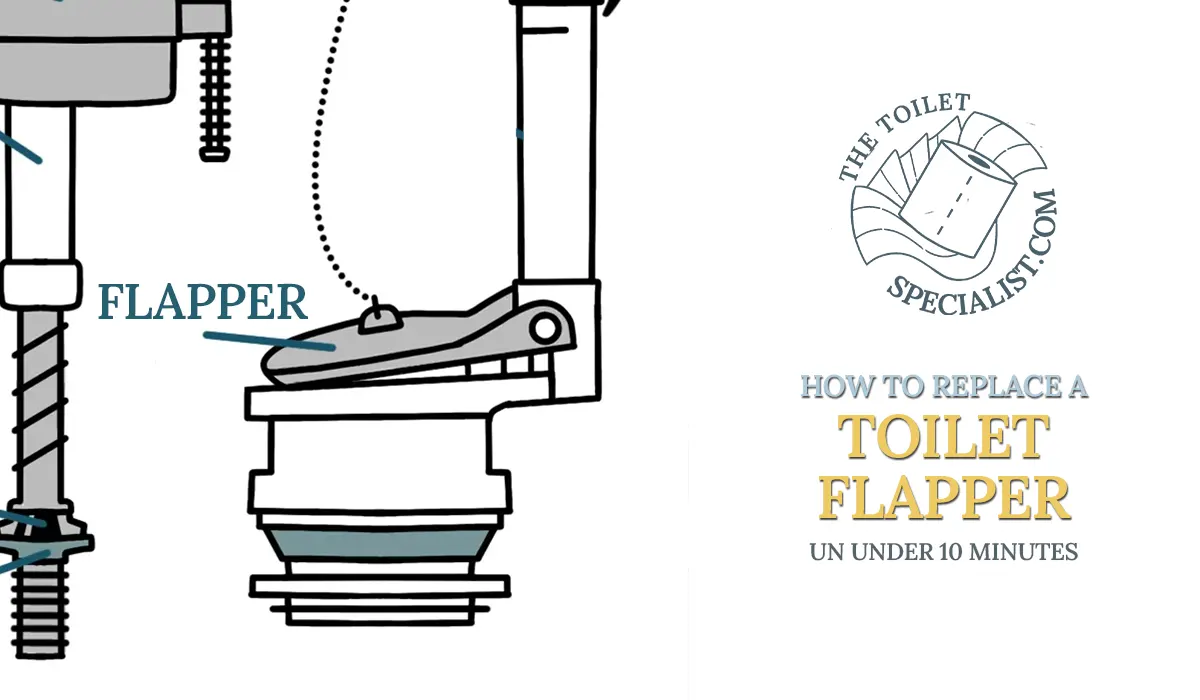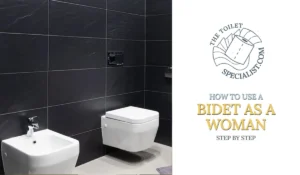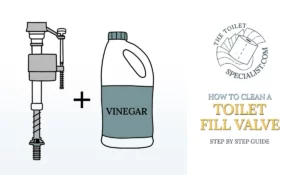Ah, the toilet flapper. Sooner or later you’ll have to deal with it. But, why again is a toilet flapper important?
A toilet flapper is important because it is the gate that lets water into the toilet bowl. You want this gate only to be opened when you flush the toilet. If the flapper is in bad shape you’ll have a runny toilet. Therefore the flapper is one of the most important parts of a well-functioning toilet.
Keep reading to find out everything you need to know in order to install a new flapper!
What is a toilet flapper?
A toilet flapper is a rubber or plastic flush valve component located inside the toilet tank. It is connected to the flush lever and covers the flush valve, preventing water from escaping the tank. When the flush lever is activated, the flapper lifts, allowing water to rush into the toilet bowl, initiating the flushing process. After flushing, the flapper settles back into place, sealing the flush valve and stopping the flow of water until the next flush.
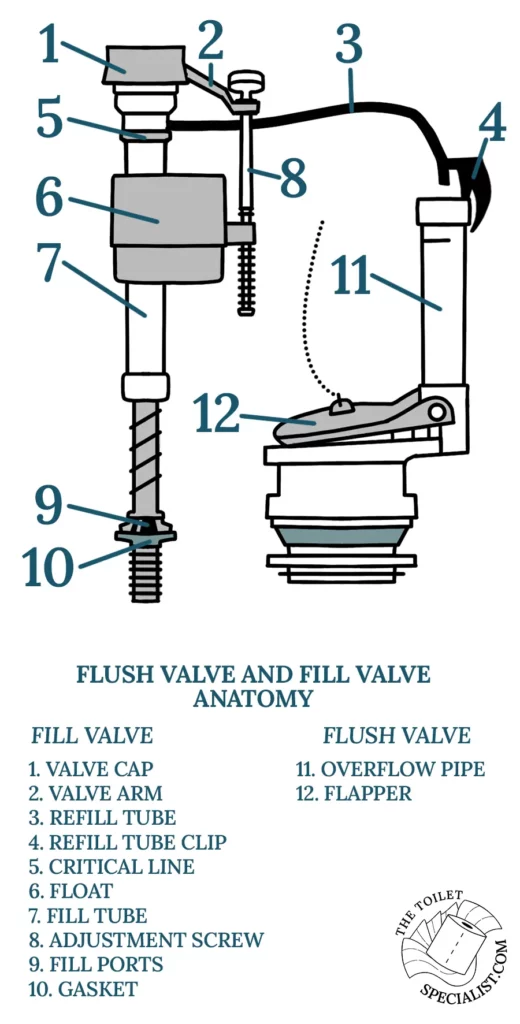
Let’s go into more detail:
The importance of the flapper, like this incredibly popular replacement one from Amazon, within the toilet system cannot be understated. When working correctly, it ensures that just the right amount of water is released into the bowl, making the flush efficient and conserving water.
When the handle is pressed, the flapper lifts, letting the water in the tank surge into the bowl to wash away the waste. After flushing, the flapper returns to its original position to seal the tank, allowing it to refill for the next use.
Without a proper functioning toilet flapper, toilets can run continuously, leading to annoying noises, wastage of water, and exorbitant utility bills.
Therefore, a toilet flapper’s effectiveness is paramount in maintaining a well-functioning toilet system, avoiding unnecessary water waste, and keeping costs down.
Regular maintenance and attention can lead to a longer-lasting, more efficient, and economical toilet system, underscoring the critical role of the humble toilet flapper.
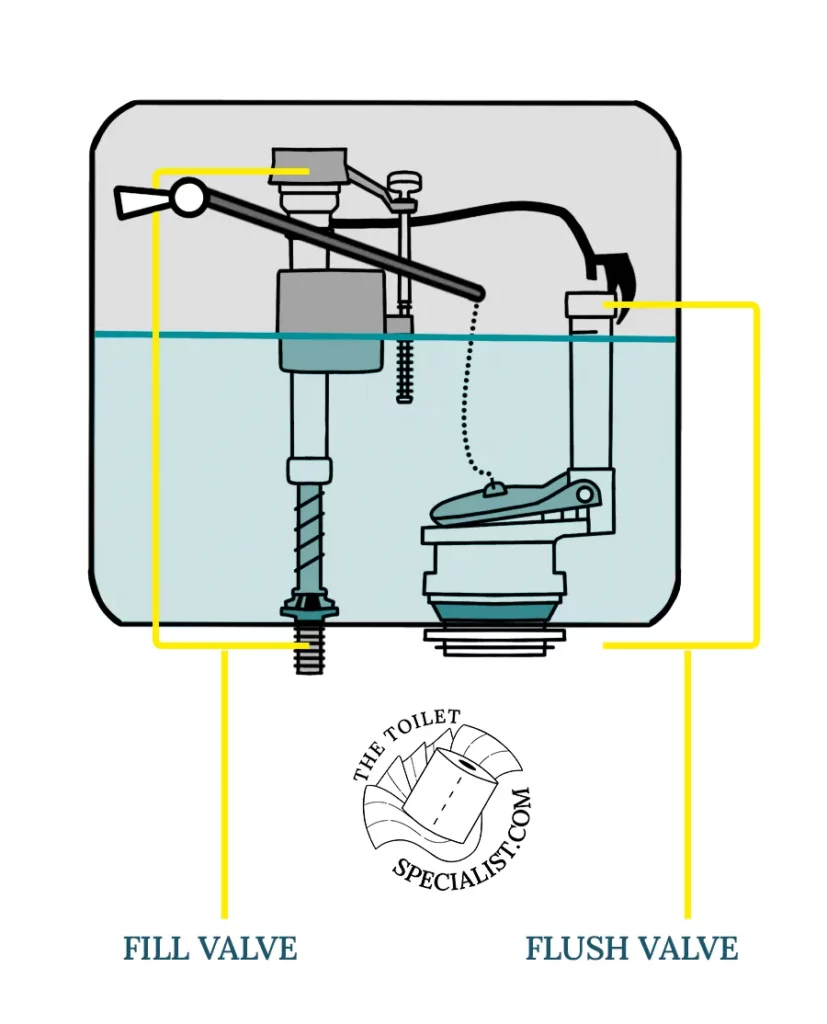
Choosing your flapper
When it comes to choosing a new toilet flapper, fit and durability should be paramount considerations. Start with understanding the make and model of your toilet; these details are typically written inside the tank or lid. Purchasing a flapper that’s an exact match to your toilet model ensures a perfect fit that can significantly minimize the chances of water leakage.
In terms of durability, flexible rubber flappers are popular because of their longevity. Regardless of the material, selecting an adjustable flapper with a rotating or sliding dial allows for better control over the flush volume hence enhancing water conservation.
Installing a toilet flapper
Now onto the installation; this is an easy do-it-yourself task.
- The first step in any replacement operation is to shut off the water supply to your toilet.Next, drain the water from the tank by flushing the toilet.
- After that, take the tank lid off and unclip the old flapper from its base on the overflow tube.
- Then detach the chain from the handle arm and take the flapper out. Now would be a good time to wipe everything down, ensuring no mineral deposits will prevent a good seal. Now that your old flapper is out, it’s time to hook up the new one.
- Carefully attach the new flapper’s ears to the base of the overflow tube and hook the chain to the handle arm.
- Finally, turn on the water supply, let the tank fill, and give a few test flushes to make sure everything is working as it should.
Here is a handy video on replacing a toilet flapper
Common Toilet Flapper Issues + how to fix
Toilet flappers are known to face several common issues that can disrupt the efficient operation of your toilet system.
1. Wear and tear
Arguably the most prevalent of these is when the flapper wears out or warps due to repeated usage or prolonged exposure to water. When this happens, it can cause the seal between the tank and the bowl to be imperfect, leading to a constant, slow leak. This issue, known as “phantom flushing,” can be identified by regular sounds of water running into the toilet bowl when the toilet is not in use.
Resolving this problem is often straightforward, replacing the worn-out flapper with a new one. However, keep in mind to match the type and size specifically designed for your toilet model to avoid compatibility issues. This is crucial since a different sized flapper can either lead to water wastage by not closing quickly enough after the flush or dropping down too soon, leading to weak flushes.
2. Dirty flapper
Another common problem arises when the flapper becomes heavily stained or covered in mineral deposits over time. This will cause a faulty seal. If you notice irregular operation or any visible discoloration, a thorough cleaning (of the tank/flapper) may be a simple solution. Using a mild cleaner and a soft cloth, gently rub the surface of the flapper; avoid using anything abrasive as it can damage the material. If cleaning doesn’t resolve the issue, it may be time for a replacement.
No matter what: do not use bleach to clean your toilet!
3. Misalignment
If the flapper is not properly aligned or installed, it may not create a tight seal, resulting in water leaks and inefficient flushing.
4. Chain Problems
The chain connecting the flapper to the flush lever can become tangled, too long, or too short, affecting the flapper’s movement and functionality.
5. Flapper Size
Using the wrong size or type of flapper for your toilet model can lead to flushing issues and water wastage.
6. Stuck Open
In some cases, the flapper may get stuck in the open position, causing continuous water flow into the toilet bowl.
Remember, proper maintenance and timely replacement of your toilet flapper significantly prolong the life of your toilet system. Regular checks for wear and tear or mineral build-up help circumvent any major toilet malfunctions. If ever in doubt, never hesitate to call up a professional plumber to save the day! Happy flushing!
Q&A
Can you just replace the flapper in the toilet?
You can just replace the flapper in your toilet as it is a beginner-friendly task. It doesn’t require any knowledge about plumbing.
How do I know if my flapper is bad?
You know your toilet flapper is bad when your toilet keeps running water. Visual inspection also confirms whether or not your flapper is bad. Do this by simply taking the lid of the tank and inspect.
Are toilet flappers universal?
Toilet flappers are not universal. Take your old flapper to the store to ensure you get the right size. Also check your toilet’s GPF as that might be important when choosing a replacement flapper.
Disclaimer: TheToiletSpecialist.com is not responsible for any damage caused to your toilet and surroundings by (wrongly) interpreting information found on this site. Please seek custom advice from a professional to evaluate your current situation.
This article may contain affiliate links at no extra cost to you. AF links help support this blog so that it can exist and expand for years to come!

